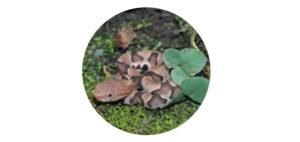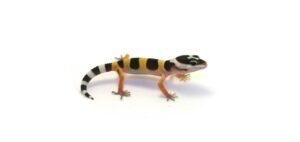Are Baby Rattlesnakes the Most Dangerous Biters?
Table of Contents
Baby Rattlesnakes: All You Need To Know
There is a common misconception that the bite of baby rattlesnakes is more fatal than the bite of the adult. Snakes are more active during the warm spring temperature in the Bay Area. These snakes include different types and the western rattlesnake that is a local species.
The rattlesnake or Crotalus oreganus possesses considerate risk. During this time the vipers wake from their hibernation and as they used their energy denned up in the winter. They are actively hunting for prey and looking to mate. Their chances of encountering humans are high.
One of the recent bite incidents occurred on Mount Tam, the involved snake was a young snake from the length mentioned it measured up to 9 to 12 inches. The common belief that baby rattleheads are more dangerous arises from 2 kinds of reasoning.
First, some believe that the Baby Rattlesnakes cannot regulate the quantity of toxin it injects in the prey so its bite may be fatal. The second line of reasoning comes from the fact that the adult rattlers are more experienced in biting and usually won’t waste their venom in a defensive bite leading to a dry bite or bite with no venom sometimes.
As they inject little or no venom it is believed their defensive bite is less dangerous. The venom sacs of young rattlers are small and even though if we consider the fact true that they cannot regulate their venom.
Some research studies are depicting that they may be able to regulate the level of toxin they inject. The toxin sacs of adult snakes are much larger and store a much large quantity of toxin than baby rattlers.
Therefore, adults are capable of injecting more quantity of venom while the young rattlers only inject a small percentage of the toxin available.
This depicts the severity of an adult snake bite. There is not much data available from which we can compute the frequency of dry bites across various age groups. So it is difficult to ascertain whether the adult gives more dry bites compared to young rattlers.
Baby Rattlesnakes Facts
In a research paper by Donald Janes, a Lynchburg General Hospital doctor, and his colleagues examined the data collected in a period of 9 years about snakebites. They were able to positively correlate the size and not the age of the rattlehead snake with the severity of the bite.
People bitten by larger snakes were bedridden for a longer time and needed more quantity of anti-venom vials. It should however be noted that in any case of a rattlesnake bite, the patient should be rushed to the hospital as it is a medical emergency.
Common methods like sucking the wound or cutting the wound should not be adopted. Some information on how to handle a rattlesnake bite is provided below. In regions where bites are common people should stay alert and try to get not bitten in the first place.
These Baby Rattlesnakes are shy creatures and won’t attack unless threatened or stepped on accidentally, cornered, and handled. Their rattle is supposed to alert others of its presence and not be in a situation where it has to bite.
If the majority of bite incidents in the US are analyzed, it occurs when someone tries to accidentally or purposefully handle the snake or tries to harass or kill it. It might be a way much better option to leave the snake than trying to kill it. Most of these bite patients are often male, young, or intoxicated individuals.
If you are not a snake expert who can identify a poisonous snake by many of its features you should avoid handling a snake. There are laws and rules against handling them in wildlife or parks. These snakes do resemble other snakes like night snakes, gopher snakes, juvenile yellow-bellied racers, and night snakes.
Baby Rattlesnakes
The Baby Rattlesnakes may lack their characteristic rattle which can confuse people. They are abundant in the spring. When you are in such a situation it is advised to give the snake a wide berth and it won’t chase after you.
You should be vigilant in an area where these snakes are common. You should be more alert around outcrops and rock formations that can be used as sites of hiding by the snakes. So it is advised not only to watch your step but also your hand placements in rocks where they may be potentially basking.
You should be careful not to startle a rattlesnake accidentally. Though they are common in Bay Area, you should be vigilant to avoid being bitten. If you have a chance encounter with a rattlesnake then you can admire them and give them space. These shy elegant predators are polite and won’t bite unless threatened.










